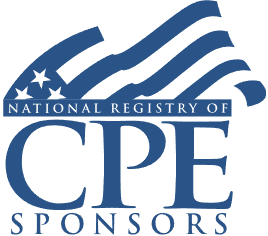2022 GST Tax Planning: Applicable Rules, Allocations, Formula Drafting, Key Challenges, and Mistakes to Avoid

Welcome! Strafford is now BARBRI! The expert courses you know from the trusted global leader in legal education.
Course Details
- smart_display Format
On-Demand
- signal_cellular_alt Difficulty Level
Intermediate
- work Practice Area
Estate Planning
- event Date
Wednesday, July 27, 2022
- schedule Time
1:00 p.m. ET./10:00 a.m. PT
- timer Program Length
90 minutes
-
This 90-minute webinar is eligible in most states for 1.5 CLE credits.
-
BARBRI is a NASBA CPE sponsor and this 110-minute webinar is accredited for 2.0 CPE credits.
-
Live Online
On Demand
This CLE course will provide estate planners guidance on key generation-skipping transfer (GST) tax planning techniques under current tax law and potential tax law changes. The panel will discuss applicable GST rules and utilizing those rules to the advantage of clients, allocations, formula drafting, and more. The panel will also discuss reporting requirements, computing the GST tax, key challenges, and avoiding mistakes.
Faculty

Ms. Mendel has spent the last 15 years honing her craft counseling high net worth families on complex trust, estate and family office planning. She is a strong communicator who is skilled at listening to her clients – learning about their lives, business ventures and family needs – and helping them tailor a plan to achieve their goals.

Mr. Rappaport chairs FRB’s Taxation and Private Client Groups. He concentrates his practice in Taxation as it relates to Real Estate, Closely Held Businesses, Private Equity Funds, Family Offices and Trusts & Estates. He advises clients regarding tax planning, structuring, and compliance for commercial real estate projects, all stages of the business life cycle, generational wealth transfer, family business succession, and executive compensation. Mr. Rappaport also collaborates with other attorneys, accountants, financial advisors, bankers, and insurance professionals when they encounter matters requiring a threshold level of tax law expertise. He is known for his work on complex deals involving advanced tax considerations, such as Section 1031 Exchanges, the Qualified Opportunity Zone Program, Freeze Partnerships, Private Equity Mergers & Acquisitions, and Qualified Small Business Stock. Mr. Rappaport has served as a trusted advisor for prominent real estate funds, executives of multinational corporations, venture capitalists, successful startup businesses, ultra-high net worth families, and clients seeking creative solutions to seemingly intractable problems requiring tax-focused analysis.
Description
A solid foundation in the GST tax regime of Section 2632 and following statutes is critical to successful multi-generational gift tax planning and compliance. Estate planners must grasp skip-person transferees and gifts that will trigger GST tax, the "inclusion ratio" rules to calculate the tax cost of GSTs, and formula drafting.
Estate planners should utilize all available mechanisms, such as gifting, trusts, and other transfer methods. Potential tax law changes abound under the Biden administration. GST tax planning can assist in limiting or avoiding gift and estate taxes. Reducing the estate and gift tax exemption will impact taxpayers wishing to leave substantial amounts to grandchildren or trusts that will eventually pass to grandchildren.
The amount of the exemption from the federal GST tax is currently equal and tied to the amount of the estate and gift tax exemption. Therefore, any reduction in the estate and gift tax exemption will likewise reduce the GST tax exemption. Section 2642 provides the framework for determining the taxable portion of any GST under GST tax.
Furthermore, special rules apply to inclusion ratios and applicable fraction formulas, depending on the type of trust receiving a GST. To avoid costly tax consequences, estate planning counsel and advisers need to be constantly aware of the impact of these rules on transfers subject to the GST rules.
Listen as our experienced panel provides a deep and practical guide to applicable GST rules and methods for utilizing those rules to the advantage of clients, allocations, formula drafting, and more.
Outline
- IRC 2642 structure
- Inclusion ratio defined
- Applicable fraction defined
- Treatment of inclusion ratios in severance of GST-impacted trust into two or more trusts
- Special rules for CLATs and other trusts
- Calculation of inclusion ratio
- Planning implication of pre-transfer inclusion ratio and fraction calculations
- Utilizing GST tax planning in light of potential tax law changes
Benefits
The panel will review these and other important topics:
- What are the key planning considerations in light of potential tax law changes?
- How can GST tax planning assist clients under current tax law and in anticipation of tax law changes?
- How do you spot trusts with an inclusion ratio greater than zero?
- What is the interrelation between the inclusion ratio and an applicable fraction under Section 2642 and its regulations?
- What are the special rules for CLATs and other types of trusts in calculating the inclusion ratio and imposition of GST tax?
NASBA Details
Learning Objectives
After completing this course, you will be able to:
- Identify key planning considerations in light of potential tax law changes
- Understand how GST tax planning assists clients under current tax law and in anticipation of tax law changes
- Ascertain how to spot trusts with an inclusion ratio greater than zero
- Recognize the interrelation between inclusion ratio and an applicable fraction under Section 2642 and its regulations
- Understand the special rules for CLATs and other types of trusts in calculating the inclusion ratio and imposition of GST tax
- Field of Study: Taxes
- Level of Knowledge: Intermediate
- Advance Preparation: None
- Teaching Method: Seminar/Lecture
- Delivery Method: Group-Internet (via computer)
- Attendance Monitoring Method: Attendance is monitored electronically via a participant's PIN and through a series of attendance verification prompts displayed throughout the program
- Prerequisite: Three years+ business or public firm experience at mid-level within the organization preparing moderate-to-complex tax forms and schedules. Specific knowledge of estate tax rules and reporting; basic familiarity with gift tax concepts, exemption calculations, generation skipping taxes and portability of spousal lifetime exclusions.

Strafford Publications, Inc. is registered with the National Association of State Boards of Accountancy (NASBA) as a sponsor of continuing professional education on the National Registry of CPE Sponsors. State boards of Accountancy have final authority on the acceptance of individual courses for CPE Credits. Complaints regarding registered sponsons may be submitted to NASBA through its website: www.nasbaregistry.org.
Unlimited access to premium CLE courses:
- Annual access
- Available live and on-demand
- Best for attorneys and legal professionals
Unlimited access to premium CPE courses.:
- Annual access
- Available live and on-demand
- Best for CPAs and tax professionals
Unlimited access to premium CLE, CPE, Professional Skills and Practice-Ready courses.:
- Annual access
- Available live and on-demand
- Best for legal, accounting, and tax professionals
Unlimited access to Professional Skills and Practice-Ready courses:
- Annual access
- Available on-demand
- Best for new attorneys
Related Courses
Recommended Resources
Building Your Book: Strategies to Secure Long-Term Success
- Business & Professional Skills
- Career Advancement
- Talent Development
